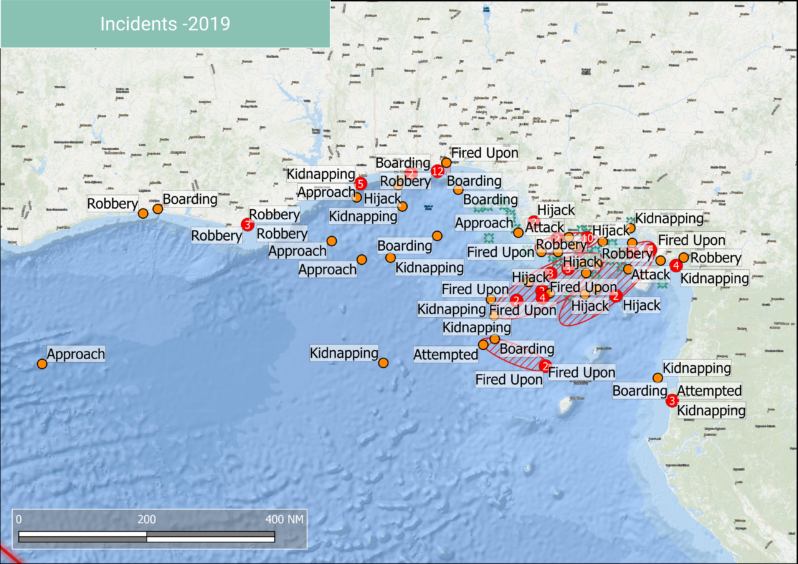
Higher insurance premiums for maritime work in the Indian Ocean is out of step with reality, according to Dryad Global’s annual report.
The Indian Ocean, where premiums are highest and insurers require armed guards, overlooks the fact that the area ranks fourth in maritime crime, Dryad said. This is less than one fifth of the most dangerous area: West Africa. This is the “most dangerous commercial maritime operating environment”, the security specialists said, with the greatest number and type of incidents.
There has been a 73% fall in maritime security incidents in the Indian Ocean in 2019, from 2018, excluding geopolitical events. This area came to prominence around 10 years ago when instability in Somalia provided an environment that allowed pirates to operate from the country.
The Somali piracy problem has been largely resolved with attacks substantially down from the 2011 peak of 234 attacks.
The risk to “maritime operators in the Indian Ocean is being misrepresented”, the report said, with costs not in line with the actual risk.
While incidents in the region have trended down, there has been a rise in the roles of state-backed actions, the security company said.
Iran took a number of steps in 2019 to demonstrate its ability to project power, in response to the tightening of sanctions and the seizing of an Iranian-flagged tanker, the Grace 1 off Gibraltar. Saudi-flagged vessels are most at risk, Dryad said.
West Africa, meanwhile, has become the “global epicentre of violent maritime crime”, the report said. This is centred on Nigeria, with oil production acting to worsen various social tensions. There has been a shift to kidnapping in the area over the last 18 months, which appears economically more rewarding and with less risk of being caught than robbery.
There has been a particular increase in danger in Cameroonian waters. The country’s government has moved to provide armed guards to shipping in an attempt to tackle this problem, similar to moves from Benin.
